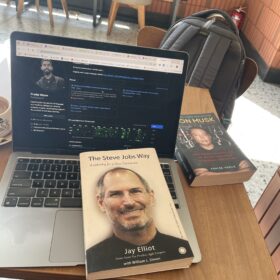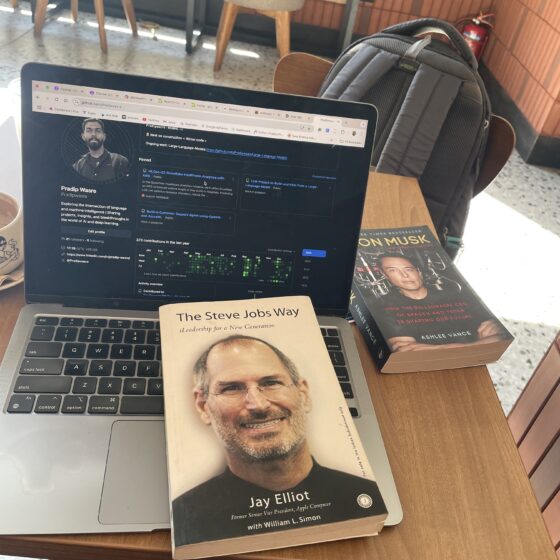W4: Day 2 – Mastering LLM Leaderboards and Use Cases
Day 2 of Week 4 focuses on navigating the top leaderboards, benchmarking large language models (LLMs), and exploring their specialized use cases. You’ll also gain insights into evaluating LLMs for specific tasks, from coding to commercial applications. Let’s dive in!
2.1 Comparing LLMs: Top 6 Leaderboards for Evaluating Language Models
Making informed decisions about LLMs starts with understanding where they excel. Today, we explore six essential leaderboards to help you evaluate and choose the right model for your needs.
1. HuggingFace Open LLM Leaderboard
The go-to resource for comparing open-source models like LLaMA, BLOOM, and Falcon.
- New and Old Versions: Track progress as models improve over time.
- Benchmarks Included: Evaluate performance on coding, reasoning, and domain-specific tasks.
2. HuggingFace BigCode Leaderboard
Focused on code generation models, this leaderboard showcases models trained to write and debug code.
- Compare models like StarCoder and PolyCoder on HumanEval benchmarks.
- Great for developers building tools for software engineering or automation.
3. HuggingFace LLM-Perf Leaderboard
This leaderboard ranks models based on real-world performance across multiple domains.
- Covers multitask reasoning, comprehension, and specialized benchmarks.
- Helps identify models optimized for commercial and high-impact use cases.
4. HuggingFace Specialized Leaderboards
Includes leaderboards for:
- Medical Models: Evaluate models designed for healthcare applications.
- Language-Specific Models: Assess proficiency in non-English languages like Spanish, Chinese, and more.
5. Vellum Leaderboard
A commercial-focused leaderboard that incorporates:
- Cost Analysis: Evaluates cost per API call, training, or inference.
- Context Window Size: Compares how much information each model can handle simultaneously.
6. Seal Leaderboard
Focuses on expert skills across diverse domains.
- Models are evaluated on their ability to perform advanced reasoning and domain-specific tasks.
The LMSYS Arena: A Head-to-Head Comparison Platform
The LMSYS Arena offers an innovative way to compare LLMs using:
- Blind Human Evaluations: Compare models like GPT-4, Claude, and LLaMA without bias.
- ELO Ratings: Inspired by chess rankings, ELO scores rank models based on direct competition.
- Community Participation: Contribute by voting in model comparisons and learn firsthand how models differ.
Commercial Use Cases of LLMs
LLMs are reshaping industries with applications that span law, healthcare, and education. Here are some standout examples:
- Law: Harvey.ai assists legal professionals by drafting documents, summarizing cases, and more.
- Talent Management: Nebula.io uses LLMs to match job seekers with roles based on skills and preferences.
- Code Porting: Bloop.ai automates the conversion of code between programming languages.
- Healthcare: Salesforce Health leverages LLMs to provide personalized care recommendations.
- Education: Khanmigo enhances learning by providing real-time tutoring and feedback to students.
2.2 Specialized LLM Leaderboards: Finding the Best Model for Your Use Case
BigCode Leaderboard (HuggingFace)
Focused on evaluating models specialized in coding tasks:
- Models like StarCoder and PolyCoder excel in Python, JavaScript, and multi-language challenges.
- Benchmarks include HumanEval and MultiPL-E, ensuring coverage across diverse coding problems.
LLM-Perf Leaderboard
This leaderboard evaluates models in:
- General Language Tasks: Like reasoning and summarization.
- Domain-Specific Tasks: E.g., medical or legal applications.
- Use this leaderboard to match models to tasks in your industry.
2.3 LLaMA vs. GPT-4: Benchmarking Models for Code Generation
Let’s compare top models across various tasks and evaluate their speed and cost-effectiveness.
Best Models per Task
- Multitask Reasoning (MMLU): GPT-4 leads with its extensive training and large context window.
- Coding (HumanEval): GPT-4 dominates but open-source alternatives like LLaMA are catching up.
- Math (MATH): GPT-4 excels, but emerging models like Anthropic Claude show promise.
Fastest and Most Affordable Models
- Fastest Models: Falcon and Mistral are lightweight and optimized for speed.
- Lowest Latency (TTFT): Models like GPT-3.5 Turbo offer quick responses, critical for real-time applications.
- Cheapest Models: Open-source models like LLaMA reduce costs for businesses with in-house infrastructure.
2.4 Human-Rated Language Models: LMSYS Chatbot Arena
The LMSYS Chatbot Arena is an invaluable resource for:
- Blind Testing: See how models perform without knowing which one you’re evaluating.
- ELO Scores: Understand how models rank against each other in conversational tasks.
- Learning by Participating: By voting and interacting, you contribute to the ecosystem and deepen your understanding of model performance.
2.5 Commercial Applications of LLMs: From Law to Education
LLMs are transforming industries. Here’s how they’re making an impact:
- Law (Harvey.ai):
- Drafts legal documents, performs case analysis, and provides research assistance.
- Saves time and reduces errors for legal professionals.
- Talent Management (Nebula.io):
- Matches job seekers to roles using AI-driven profiling.
- Enhances hiring processes by reducing bias and improving candidate matching.
- Code Porting (Bloop.ai):
- Automates code translation between programming languages.
- Helps developers optimize for performance and compatibility.
- Healthcare (Salesforce Health):
- Personalizes patient care using AI insights.
- Reduces administrative burden for healthcare providers.
- Education (Khanmigo):
-
- Offers real-time tutoring and feedback to students.
- Supports personalized learning journeys.
2.6 Comparing Frontier and Open-Source LLMs for Code Conversion Projects
This week’s commercial challenge involves building a product that converts Python code to C++ for improved performance. Here’s how to approach it:
Solution with a Frontier Model
- Pros:
- High accuracy and better handling of complex syntax.
- Faster development with pre-trained APIs.
- Cons:
- Higher costs and dependency on external providers.
Solution with an Open-Source Model
- Pros:
- Cost-effective and customizable.
- Freedom from licensing constraints.
- Cons:
- Requires more fine-tuning and in-house expertise.
Next Steps
By the end of today, you’ll be ready to:
- Navigate the top leaderboards to evaluate LLMs.
- Understand how benchmarks correlate to real-world performance.
- Begin selecting models for your Python-to-C++ code conversion project.
Tomorrow, we’ll dive deeper into hands-on techniques for fine-tuning and deploying LLMs for specific tasks.

